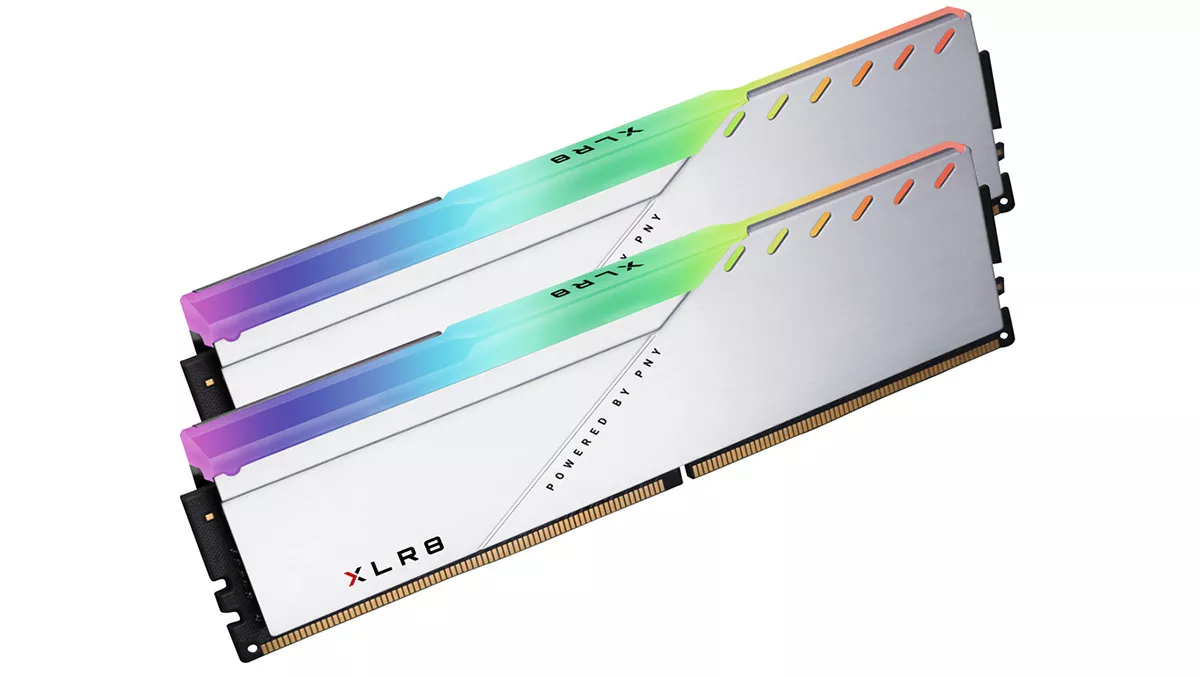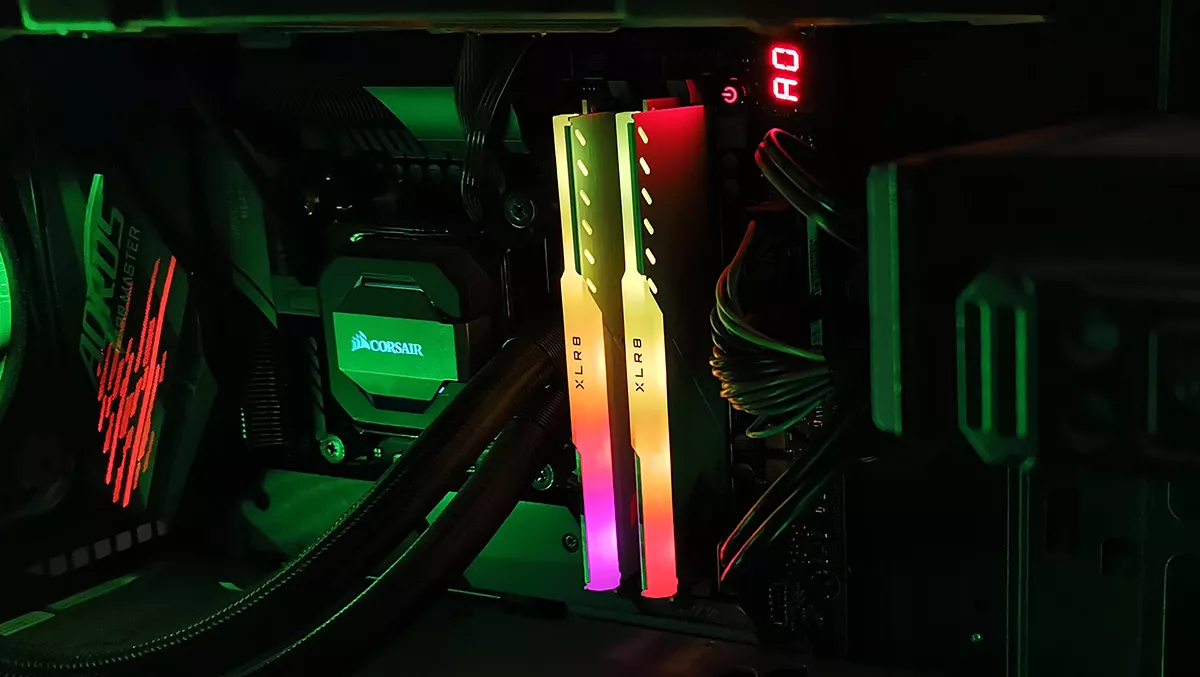
Hands-on review: 16GB PNY XLR8 Gaming EPIC-X 3600MHz DDR4
PNY sent over its 16GB XLR8 Gaming EPIC-X 3600MHz CL16 DDR4 module kit for testing. The kit contains two 8GB dual-channel modules with RGB lighting.
The RAM is compatible with speeds from 2133MHz to 3600MHz (which utilizes a factory XMP 2.0 overclock). According to the packaging the RGB lighting works with Asus' Aura Sync, ASRocks' Polychrome Sync and MSI's Mystic Light Sync, and GigaByte's RGB Fusion
I've been using 32GB of PNY's XLR8 RGB 3200MHz DDR4 for a couple of years now, without any issues. Even now, the memory performance places it in the 76%tile range with Performance Test 10.1.
I tested the XLR8 Gaming 3600MHz memory modules on an Aorus Z490 Master motherboard running with an Intel Core i9 -10900K CPU and a PNY XLR8 Gaming RTX 3090 GPU. The physical installation was a breeze down, mostly down to the positive way the Aorus motherboard sockets allow memory to positively click into place.

As per the Aorus motherboard's manual, I installed them in slot 2 and slot 4. It is always worth checking which sockets should be populated as it's not always intuitive. DDR4 modules should be purchased in at least kits of two so that it is installed in a double channel mode. Whilst practically this will make little difference to the speed of the RAM, it is the optimal and intended way that DDR4 should be configured.
The only settings that needed adjusting post-installation is selecting the XMP 2.0 profile from within the motherboard's UEFI menu. This is done by pressing DEL (common with most, but not all motherboards) just before Windows starts loading. The memory will still work if you don't do the above but will default to slower speeds. XMP 2.0 allows memory modules to run at higher speeds than the JEDEC standards, setting them to the factory overclock that they are designed to accommodate.
The XMP 2.0 specification of the 3600MHz DDR4 modules (from the CPU-Z app) grants a frequency of 1800 MHz (the double data rate, i.e. DDR, doubling the frequency to 3600MHz), with timings of CL18-20-20-40-60 at 1.350 volts. The high frequency, along with the low latency of 18 makes these DDR4 modules ideal for users that have upgraded to Intel's 12th generation CPUs, but are unwilling to splash out on the newer and much more expensive) DDR5 memory modules. They are also perfect for users wanting that final DDR4 memory upgrade before jumping over to DDR5 with their next PC, once the new memory standard has matured enough to see real gains.
Testing the PNY XLR8 Gaming EPIC-X 3600MHz DDR4 memory modules using Performance Mark 10.1 garnered some impressive results, the test achieving a memory mark of 3323, an 85%-tile result. Compare this to the much more expensive PNY XLR8 Gaming MAKO 6000MHz DDR5 I recently tested, which achieved a 92%-tile score, and you can see that the DDR4 can still hold its own.

To be honest, right now you are likely to get similar performance and maybe even better performance from these low latency DDR4 modules than you will from the current crop of DDR5 modules. This will, of course, likely change as DDR5 technology matures, but there's absolutely nothing wrong with sticking with DDR4 for now.
The only downside with this PNY kit is that it is only 16GB. For games, it's really on the cusp, but you shouldn't have a problem as long as you are not running multiple applications in the background. I got a warning a couple of times from Star Citizen telling me that I only had 6GB of the 16GB installed available for the game, but it still ran without issue.
If, however, you use video or image editing software and/or 3D modelling/rendering packages I would recommend 32GB of memory. If only to raise the ceiling and avoid potential issues when using multiple applications at once. In the next five years, I can see 32GB of memory being the norm, and considering the likelihood of compatibility problems (even if they are identical) of adding more memory modules at a later date, it's probably worth investing in 32GB now if you can afford to and plan on keeping your PC for a few years.

In a windowed PC chassis, the two sticks look pretty good, the brushed aluminium heat spreaders giving them a unique look. The RGB complimented my other RGB components. Whilst I've had no problems linking PNY RGB lighting to the Asus Aura Sync app in the past, I could not get it to be recognised with Gigabyte's RGB Fusion app- this is more likely down to the, rather flaky, Gigabyte RGB software rather than the memory modules. In any case, even with random lighting, they look good in a windowed case.
The 16GB PNY XLR8 Gaming EPIC-X 3600MHz DDR4 kit proved to be robust, not only whilst playing games, but also whilst editing large videos and photos using Adobe Premiere and Photoshop. Easy to install and set up, the memory ran as it should and to specification. Not only does it look good in your case, the high-performance 16GB kit also offers gamers a sound, and more affordable, DDR4 memory module upgrade.


